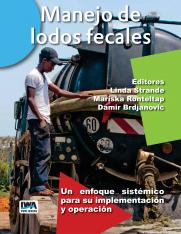 Manejo de Lodos Fecales
Manejo de Lodos Fecales
ISBN: 9781780408019
eISBN: 9781780408026
This book is a Spanish translation of Faecal Sludge Management: Systems Approach for Implementation and Operation.
Más de 1.000 millones de personas en las áreas urbanas y peri-urbanas de África, Asia y América utilizan tecnologías descentralizadas de saneamiento. Hasta ahora se ha descuidado tremendamente el manejo de los lodos fecales producidos por estas tecnologías. Los recursos financieros son frecuentemente insuficientes y estos sistemas descentralizados suelen ser vistos como soluciones temporales, hasta poder implementar sistemas con alcantarillado. Sin embargo, la verdad es que el saneamiento descentralizado está aquí para quedarse, sea como soluciones independientes temporales o permanentes, o en combinación con sistemas basados en el alcantarillado. El manejo adecuado y apropiado de los lodos fecales es primordial para la protección de la salud humana y ambiental. Este es el primer libro dedicado netamente al manejo de lodos fecales. Compila el estado actual de conocimiento en este campo que está evolucionando rápidamente y presenta un enfoque integrado que incluye la tecnología, el manejo y la planificación. Aborda la planificación y organización de toda la cadena de servicios de manejo de lodos fecales, desde su recolección y transporte hasta su tratamiento y uso o disposición final. Además de resumir los fundamentos y tecnologías, el libro también expone los detalles de los aspectos operativos, institucionales y financieros y las pautas para planificar un proyecto para el manejo de lodos fecales con la participación de todos los actores. Editado.
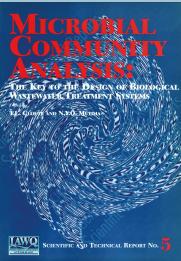 Microbial Community Analysis: the Key to the Design of Biological Wastewater Treatment Systems
Microbial Community Analysis: the Key to the Design of Biological Wastewater Treatment Systems
eISBN: 9781780408972
Scientific and Technical Reports No. 5
In this Scientific and Technical Report an overview is given of biological wastewater treatment systems and the principles on which they operate. The microbiology of these systems is discussed. The latest techniques for studying community structure and function are reviewed, as well as the principles for system modelling and design.
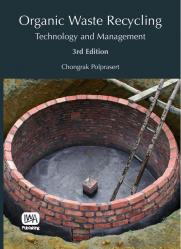 Organic Waste Recycling: Technology and Management – Third Edition
Organic Waste Recycling: Technology and Management – Third Edition
ISBN: 9781843391210
eISBN: 9781780402024
This book covers the principles and practices of technologies for the control of pollution originating from organic wastes (e.g. human faeces and urine, wastewater, solid wastes, animal manure and agro-industrial wastes) and the recycling of these organic wastes into valuable products such as fertilizer, biofuels, algal and fish protein and irrigated crops.
Each recycling technology is described with respect to: - Objectives - Benefits and limitations - Environmental requirements - Design criteria of the process - Use of the recycled products - Public health aspects. Organic Waste Recycling includes case studies, examples, exercises and questions. This book is intended as a text or reference book for third or fourth year undergraduate students interested in environmental science, engineering and management, and graduate students working in the environment-related disciplines. It also serves as a reference text for policy makers, planners and professionals working in the environment and sustainable development fields.
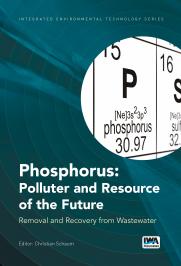 Phosphorus: Polluter and Resource of the Future: Removal and Recovery from Wastewater (Open Access Chapters Only)
Phosphorus: Polluter and Resource of the Future: Removal and Recovery from Wastewater (Open Access Chapters Only)
ISBN: 9781780408354
eISBN: 9781780408361
Phosphorus has always been both a curse and a blessing. On the one hand, it is essential for all life forms and cannot be replaced by anything. On the other hand, wastewater treatment aims to minimize phosphorus concentrations in wastewater in order to minimize its discharge into rivers and lakes, where eutrophication caused by high phosphorus concentrations would lead to excessive plant growth. Phosphorus is extracted from rock phosphate deposits, which are finite and non-renewable. And as the issue of resource conservation is the focus of attention worldwide, phosphorus must be used sustainably. This includes recycling of secondary phosphates, efficient extraction and treatment of raw phosphate as well as its efficient use.
The book starts from the peculiarity of the element phosphorus in Part I Phosphorus a special element?, Part II shows the possibilities and limitations of the elimination of phosphorus during the wastewater treatment. Current developments in phosphorus recovery are presented in Part III Phosphorus Recovery - Technology, where also a large number of technology developments are presented in the context of case studies. Part IV “Assessment” shows impulses for future ways. The book concludes with an “Outlook” in Part V. The book is partially based on the book Phosphorus in Environmental Technology – Principles and Application, edited by Eugina Valsami-Jones and published by IWA Publishing in 2004. Various new technologies have been developed since its release, particularly in the area of phosphorus recovery. Phosphorus: Polluter and Resource of the Future discusses all aspects of both Phosphorus elimination and recovery and summarizes the latest state of Phosphorus recovery technologies.
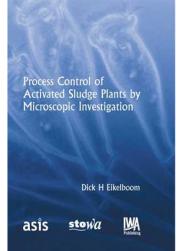 Process Control of Activated Sludge Plants by Microscopic Investigation
Process Control of Activated Sludge Plants by Microscopic Investigation
ISBN: 9781900222297
eISBN: 9781789060003
Process stability and final effluent quality largely depend upon the composition of the biomass in an activated sludge plant. Operational problems such as bulking and scum formation occur when the wrong micro-organisms are dominating the sludge population. Microscopic sludge investigation is therefore essential for process control and stable plant operation. The manual outlines the theoretical framework, extensively illustrated with full-colour micrographs.
Contents: - Microscopy - Microscopic sludge investigation - Characteristics of activated sludge flocs - Filamentous micro-organisms - Protozoa and metazoa - Conclusions of microscopic sludge investigation - The activated sludge process - Operational problems - Bulking sludge - Scum formation.
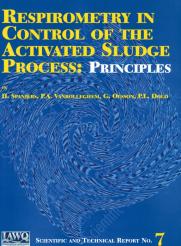 Respirometry in Control of the Activated Sludge Process: Principles
Respirometry in Control of the Activated Sludge Process: Principles
ISBN: 9781780409009
Scientific and Technical Reports No. 7
The report is organized as follows. After a short introduction, the biochemical fundamentals of respiration, its modelling and assessment are reviewed. Then, a major contribution of the Task Group is presented, i.e. a new classification of respirometric measuring principles. The variables measured and deduced with respirometry are subsequently summarized. Next, the basics of control systems are provided, followed by a structured overview of respirometry-based control strategies found in the literature. Finally, some concluding remarks are made.